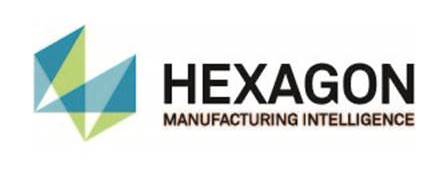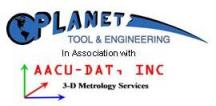Speaker Bio:
Triumph Red Oak is a Tier 1 supplier for Aerospace Industry integrated composite or metal airframe structures as well as complex bonded details and assemblies for any type of aircraft.
Education:
• Bachelor of Science (BS) degree in Industrial Management Manufacturing from California University of Pennsylvania
• Masters of Business Administration (MBA) from Dallas Baptist University
When not at work, I like to spend time with the family (Wife + 3 Kids), Golfing, and Home Improvement Projects.
CMSC 2017 Abstract
Title: Metrology Guided Wing Join Automation
Edward Serwinski, Triumph Aerostructures-Vought Aircraft Division, Red Oak, TX, eserwinski@triumphgroup.com
Scott Sandwith, New River Kinematics, Williamsburg VA, scott@kinematics.com
This paper presents the metrology automation solution implemented to optimally align aircraft wings at Triumph Aerostructures-Vought Aircraft Division (Triumph). The Wing Join measurement and alignment process enables Triumph to ensure the left and right wings are precisely fit to one another to achieve aerodynamic wing characteristics.
The wings are joined in a laydown unconstrained deflected orientation using key feature targets established in individual assembly jigs. The join station at Triumph uses 6 positioners (3 positioners for the LH Wing & 3 positioners for the RH Wing) which allows each wing section to be adjusted relative to their key features. Operators use the Wing Join Cell’s Metrology Automation Software to sequence two online laser trackers through the measurement of key points on critical wing features. The key feature points are optimized and the resulting transform is used to determine specific sets of incremental 6D moves (e.g., steps) to join the wings. The transform is kinematically decoupled into the relative moves for each positioner and sends the specific positioner moves to the tool controller. Each step in the process achieves goal positions based on automated measurements of the actual wing position and the optimized into the final wing assembly.
The transforms from the actual location to final optimized location for the left and right wings are broken down into a sequence of goal moves sent to positioner controller via an OPC server exchange by the metrology automation software interface. After each move in the sequence the metrology automation system measures the actual location of the wing and computes the delta move to achieve the aligned goal position. After the adjustment move, the operator can automatically validate the move using the two trackers. This iterative process of moving left and right wing components to meet the assembly’s alignment tolerances is referred to as ‘The Wonka Wonka.’ It continues until the alignment tolerances are met at each step in the sequence.





